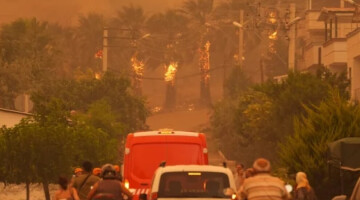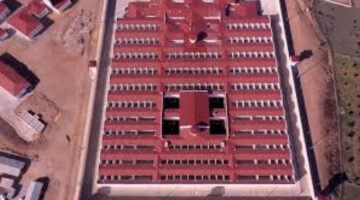Mahsum Çiya Korkmaz, co-chair of the Amed Branch of the Chamber of Civil Engineers, said that less than 3 percent of the heavily damaged buildings that had to be demolished in Amed after the earthquakes have not been demolished. "Just 80 of the 3200 heavily damaged structures have been demolished so far."
The earthquakes that hit Kurdistan, south east Turkey and Syria caused thousands of deaths and wounded as well as the collapse and damage of thousands of buildings. The city of Amed was not saved from destruction. In the damage assessment work carried out after the earthquake, it was recorded that approximately 3,200 buildings were heavily damaged. These structures should have been demolished immediately. However, less than 3 percent of them have yet to be demolished. Clearly, the damaged buildings pose a great risk to the citizens and architects and engineers have issued a new call to the authorities.
Chamber of Civil Engineers Amed Branch co-chair Mahsuö Çiya Korkmaz said that the damaged buildings should be demolished as soon as possible, especially because some have the presence of asbestos, and this poses citizens at risk.
Korkmaz said that there are buildings so damaged that they didn’t even need to be assessed after the earthquake, and added that over 100 buildings need to be demolished as soon as possible.
'Demolition started too late'
Korkmaz said that 80 thousand buildings were damaged in and around Amed, and added: "Whenever there were objections, the damage assessment was made twice. Therefore, it was considered normal for the process to take this long. But this is not the case. In fact, in general, the damage assessment was completed a month and a half ago. This work revealed that 3200 buildings were heavily damaged. And this figure does not include the medium and slightly damaged buildings. The authorities first awarded the tender for these demolitions to the metropolitan municipality. Then they gave it to the governor. Neighbourhood-based tenders were also made for the demolition process, and these ended 10 days ago. The reality is that demolition has just begun.”
The demolition of heavily damaged buildings in the city is progressing very slowly and is very difficult to see when the 3,200 buildings will actually be demolished at this pace. Korkmaz said:
“So far, 80 buildings have been demolished. But at this speed, it will take years for all the buildings to be demolished. All of these buildings pose great risks as they are located in heavily populated areas. There is a serious risk of these buildings collapsing because the heavy traffic provokes waves. Clearly, demolition must take place in accordance with the regulations of the Ministry of Environment and Urbanization. In this directive, it was clearly stated that demolition should not start from the lower floors. So that means it has to start from the top floors by picking up the rubble with cranes. As long as it is done like this, dust and asbestos can be contained. However, we see that the opposite was happening in the first demolitions: columns on the bottom floor are blown up, causing the building to collapse. The result is that while we try to eliminate one danger, another danger is created."
Asbestos with carcinogenic substances
Korkmaz said that asbestos, which carries carcinogenic substances, poses a serious risk in the city while demolition takes place, and added: “Warnings regarding asbestos are also clearly mentioned in the demolition regulations. The regulation states that all materials containing asbestos must be removed from the building before demolition takes place. What are these materials? Doors and windows, for example. Actually, these are removed, but not because they contain asbestos, rather because money is made out of recycling them. For example, roofing materials contain very high levels of asbestos, but are simply destroyed without removing them. Again, composite exterior materials contain asbestos. Demolition is carried out without removing any asbestos-containing material from the building, except for the doors and windows. This is a very serious crime as it is against the regulations.”













